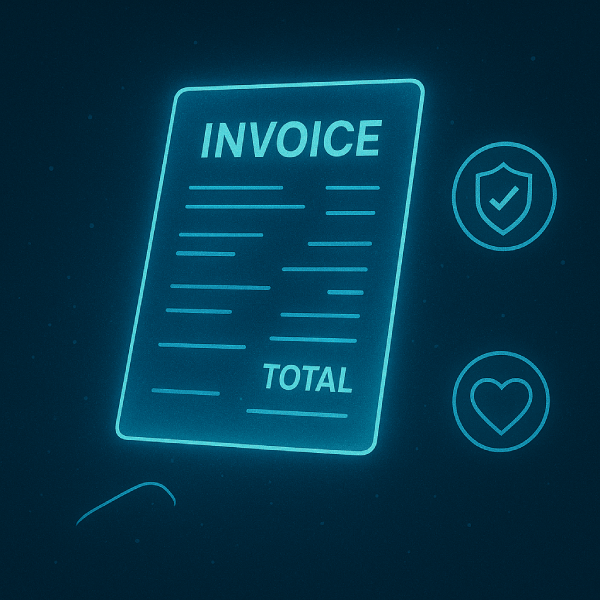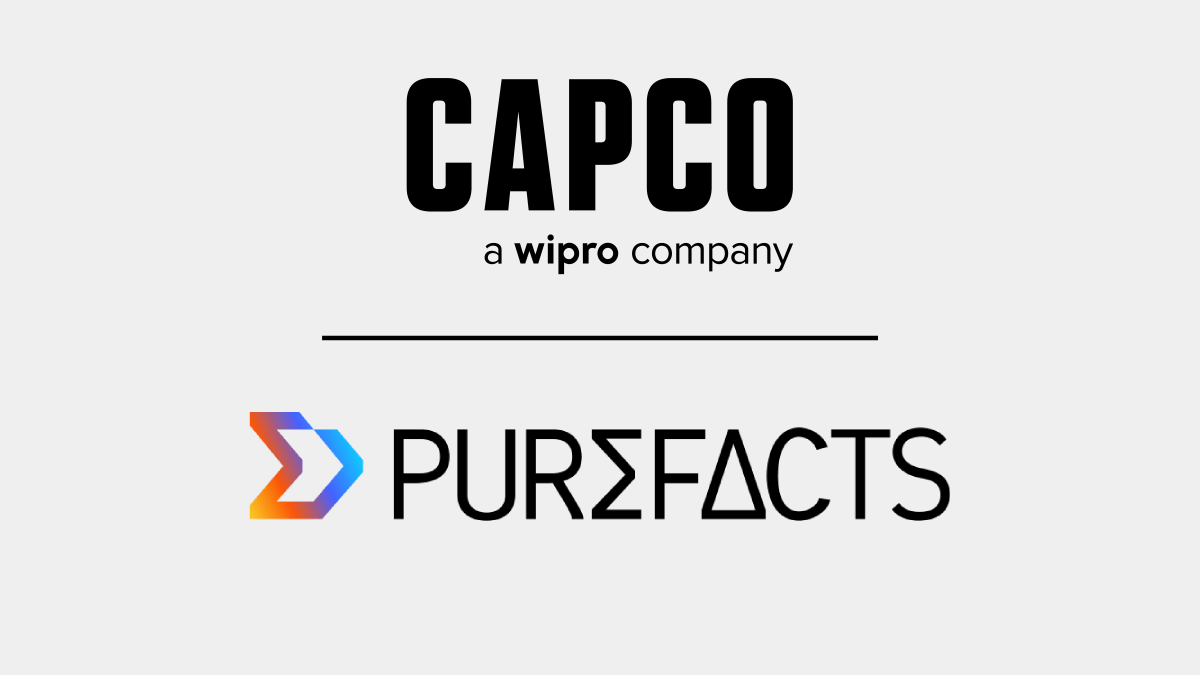For years, growth in wealth management, asset management, and asset servicing has been framed as a battle for AUM, advisor productivity, and distribution. Those levers still matter. But in 2025, the most underleveraged driver of margin, trust, and enterprise value may be the least glamorous: your billing and revenue operations.
If you’re a Head of Wealth, COO, CFO, or Chief Growth Officer, billing can no longer live in operational shadows. How you calculate, explain, and collect fees is now a board-level mandate—one that influences valuation in M&A, regulator posture, advisor retention, and client loyalty.

What your invoice is really signalling
Every statement you send is a test of operational integrity and value articulation. Clean, transparent bills tell clients “we have our house in order.” Sloppy, opaque, or error-prone bills do the opposite—and buyers see the same signal in diligence. Acquirers scrutinize revenue quality, fee policies, and the auditable trail behind them; weak revenue controls translate directly into price chips or deal risk (see diligence primers from Diligent and Grant Thornton).
At the same time, fee compression keeps ratcheting down the price investors will pay, even as they expect more service—documented by Cerulli and long-running research on pricing pressure from BCG. When your pricing power is under pressure, the only way to defend margin is to eliminate leakage, differentiate with transparency, and prove the value inside your fee.

The complexity tax is crushing legacy processes
The industry remains anchored in fee-based models—more than 70% of advisors today are primarily fee-compensated (Cerulli; PLANADVISER; additional context via Kitces). Firms are also expanding into hybrid models. The most common approaches blend AUM-based pricing with retainers, various flat fees (for financial planning and administration), and subscription services. Minimum relationship fees are also gaining traction, while more niche structures like performance fees add another layer of complexity. Commercially agile? Yes. Operationally brutal for spreadsheets and brittle billing rules? Also yes. Breakpoints, householding, UMA/SMA nuances, negotiated carve-outs—each exception creates new failure points.
Regulators know it. The SEC has documented fee-calculation deficiencies across RIAs—e.g., failing to apply tiered breakpoints or using stale asset values—resulting in direct client harm (SEC Risk Alert). Enforcement has accelerated: the SEC announced record action volume in Q1 FY2025 (press release), and FINRA’s disciplinary reports show a parallel story on supervisory gaps that drive inappropriate costs to clients (July 2025; February 2025). Legal analysts are flagging the same trend (Skadden update).
The silent P&L bleed: 1–5% revenue leakage
“Leakage” sounds minor; it isn’t. Industry write-ups and case analyses consistently peg the unintentional loss of 1–5% of earned revenue each year to misconfigurations, manual workarounds, and data fragmentation (HubiFi). For a $250M fee-revenue franchise, that’s $2.5M–$12.5M of mostly high-margin profit evaporating—before refunds, credits, or reputational damage. The larger your book (or the more complex your fee menu), the bigger the leak.
This is why billing belongs in the growth plan, not the “cost center” bucket. Margin defense is growth when it drops to EBITDA.
Why this is suddenly a C-suite (and board) problem
Three forces have elevated billing from back office to boardroom:
- Valuation and M&A readiness. Diligence teams interrogate revenue quality. If you can’t produce clean, reconciled, auditable billing data—and a policy framework to match—expect a haircut or a holdback (Diligent; Grant Thornton).
- Client expectations. Millennials and Gen Z are inheriting trillions and grew up with transparent, on-demand digital experiences. They expect to see what they’re paying for, self-serve documentation, and fees that map clearly to delivered value (Global Banking & Finance; Martlenz).
- Regulatory heat. The SEC and FINRA are turning up enforcement on advisory fees, disclosures, and conflicts (SEC Q1 FY2025 actions; FINRA actions). The “we didn’t mean to” defense does not work; weak controls are the finding (SEC Risk Alert).
The modern billing playbook (that actually moves numbers)
Executives are reframing billing as Revenue & Commerce Management—a cross-functional capability spanning finance, operations, compliance, and client experience. Here’s the pattern that wins:
- Automate the math, integrate the data. Replace spreadsheet logic with rules-based engines that sync with portfolio accounting and CRM. Integration eliminates the “multiple versions of truth” that produce misbills.
- Offer fee flexibility without operational risk. Your platform should natively handle tiered AUM, householding, retainers, performance fees, SMA/UMA splits, and negotiated exceptions—without special-case spreadsheets.
- Give clients radical transparency. Provide self-service portals with clear invoice breakdowns, full fee histories, and explanations in plain language—now an expectation among digital-native investors (Global Banking & Finance).
- Measure billing performance with KPIs. Make billing measurable and board-visible: Billing Error Rate, Revenue Leakage Recaptured, Days to Bill (charge lag), Cost to Collect, Billing-related Inquiries per 1,000 clients, and Client Billing CSAT/NPS. Useful KPI frameworks and references: Oracle’s CFO dashboards and this round-up of revenue-cycle metrics via Databox.
- Proactive anomaly detection. Use analytics to surface outliers (sudden fee jumps, misapplied breakpoints) before invoices go out—shifting from reactive remediation to prevention. Regulatory exam priorities underscore why this matters (SEC Risk Alert).
- Prove control to regulators and buyers. Documented policies, automated controls, and auditable trails turn billing from a diligence liability into a valuation premium (Skadden; Diligent).
Future-proof the revenue engine
The next decade will challenge any static billing stack:
- Open banking & data aggregation will enable real-time, holistic advice—demanding billing that ingests broader data and supports more granular, personalized pricing (Finicity/Mastercard).
- Embedded finance will weave investment and payments into partner ecosystems—requiring API-first billing that can orchestrate multi-party revenue sharing and settlement (Alloy; IIF x Deloitte; J.P. Morgan).
- Real-time payments & tokenization will collapse batch cycles. As clients expect real-time value exchange, quarterly fee sweeps will feel archaic—opening the door to usage-based or “pay-as-you-go” pricing (Citi; BofA Securities; J.P. Morgan).
Your aim isn’t to automate yesterday’s process—it’s to build a nimble revenue chassis that lets you experiment safely with new fee models, integrate with emerging channels, and meet clients where they already are.
What the board should see each quarter
If billing is truly strategic, it belongs in the KPI pack. Ask for:
- Billing Error Rate (<0.1% of invoices) and Revenue Leakage Recaptured (>1% of total revenue annually) to quantify risk and ROI.
- Days to Bill (<5 business days post-period) for cash-flow predictability.
- Cost to Collect (double-digit YoY declines with automation) for operational efficiency.
- Client Billing Satisfaction (CSAT/NPS trend) and Billing-related Inquiries per 1,000 clients (down and to the right) to measure trust and advisor time freed.
Tie each metric to risk appetite, EBITDA targets, and client retention goals. That’s how billing earns a permanent place on the board agenda.
The growth lever hiding in plain sight
When fee compression squeezes the top line and competition for assets is fierce, the most controllable path to durable growth is recapturing what you already earned, preventing avoidable refunds, and turning a potential friction point into a trust amplifier.
Modernizing billing isn’t an IT project. It’s a capital-allocation decision with clear line-of-sight to EBITDA, regulatory resilience, M&A valuation, and client lifetime value. Treat it like the strategic growth lever it is.
Execution note: If you want a partner purpose-built for the revenue lifecycle in wealth and asset management—billing automation, advisor compensation, analytics, and transparency—PureFacts delivers end-to-end revenue optimization trusted across the industry.
Works Cited
- A comprehensive guide to M&A due diligence with a 20-point checklist – Diligent https://www.diligent.com/resources/blog/mergers-acquisitions-due-diligence-checklist
- Financial Due Diligence: An essential step in the M&A process – Grant Thornton https://www.grantthornton.ch/en/insights/financial-due-diligence/
- Fee Compression and Rising Service Demands Cause… | Cerulli
https://www.cerulli.com/press-releases/fee-compression-and-rising-service-demands-cause-advisors-to-adjust-pricing-structure
- Solving the Pricing Puzzle in Wealth Management – Boston Consulting Group
https://www.bcg.com/publications/2019/solving-the-pricing-puzzle-in-wealth-management
- More Than 72% of Financial Advisors Are… | Cerulli Associates
https://www.cerulli.com/press-releases/more-than-72-of-financial-advisors-are-compensated-by-fee-based-models
- Fee-Based Models Dominate as Advisers Respond to Shifting Client Expectations – PLANADVISER https://www.planadviser.com/fee-based-models-dominate-advisers-respond-shifting-client-expectations/
- How Financial Advisors Actually Charge For Their Services – Kitces.com
https://www.kitces.com/blog/financial-advisors-charge-services-fee-structure-advisory-firm-profession-aum-pricing-insight/
- Division of Examinations Observations: Investment Adviser Fee Calculations – SEC.gov
https://www.sec.gov/files/exams-risk-alert-fee-calculations.pdf
- SEC Announces Record Enforcement Actions Brought in First Quarter of Fiscal Year 2025 – SEC.gov https://www.sec.gov/newsroom/press-releases/2025-26
- Disciplinary and Other FINRA Actions – July 2025
https://www.finra.org/sites/default/files/2025-07/disciplinary-actions-july-2025.pdf
- Disciplinary and Other FINRA Actions – February 2025
https://www.finra.org/sites/default/files/2025-02/disciplinary-actions-february-2025.pdf
- Investment Management Update | Insights | Skadden, Arps, Slate… https://www.skadden.com/insights/publications/2023/11/investment-management-update
- Understanding the Causes of Revenue Leakage: A Guide for Financial Accuracy and Profitability – HubiFi https://www.hubifi.com/blog/understanding-the-causes-of-revenue-leakage-a-guide-for-financial-accuracy-and-profitability
- Wealth Management for Millennials and Gen Z: The New Rules of … – Global Banking & Finance Review https://www.globalbankingandfinance.com/wealth-management-for-millennials-and-gen-z-the-new-rules-of-investing
- Wealth Management Trends for Millennials & Gen Z Investors – Martlenz
https://www.martlenz.com/post/the-new-face-of-wealth-key-trends-in-wealth-management-for-younger-generations
- 20 Key CFO KPIs and Dashboards for 2024 – Oracle
https://www.oracle.com/erp/cfo/cfo-kpis/
- 12 KPIs and Metrics to Include in a Revenue Cycle KPI Dashboard to Measure Success – Databox
https://databox.com/revenue-cycle-kpi-dashboard
- Wealth API | Investment Data | Mastercard – Finicity
https://www.finicity.com/manage/investment/
- Embedded finance: A deep-dive for banks and fintechs | Alloy
https://www.alloy.com/guides/understanding-embedded-finance
- The ecosystem imperative – Embedded finance: customer relationships and value web dynamics – IIF https://www.iif.com/portals/0/Files/content/32370132_iif_deloitte_embedded_finance_report_3aug_final.pdf
- Embedded Finance Evolves to Deliver Enhanced Payment Experiences | J.P. Morgan https://www.jpmorgan.com/insights/payments/payment-trends/embedded-finance-enhanced-payments-experiences
- Impact of Real-Time Payments – Citi
https://www.citigroup.com/global/insights/impact-of-real-time-payments
- Benefits of Real Time Payments (RTP) – Looking Beyond Speed – BofA Securities
https://business.bofa.com/en-us/content/benefits-of-real-time-payments.html
- Instant payments: Understanding real-time payment networks – J.P. Morgan https://www.jpmorgan.com/insights/payments/payables/instant-payments-understanding-rtp-and-fednow-service




